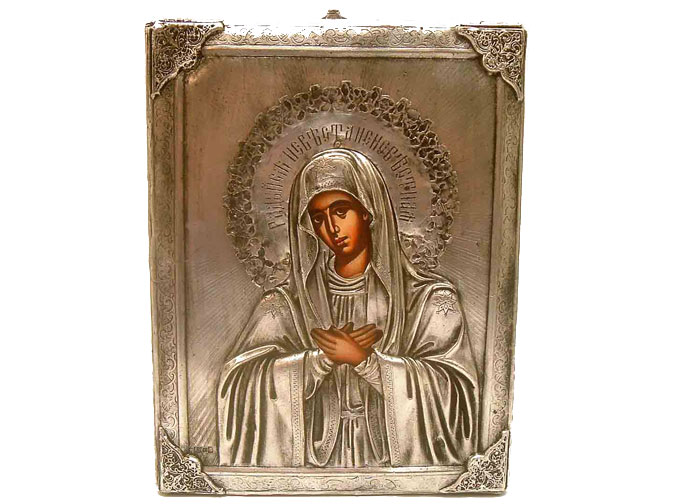Antique Russian Icons
Posted by The Russian Gift Shop on Apr 29th 2015
Antique Russian Icons
The antique Russian icon market is fraught with many pitfalls. Russia, like China and other older civilizations, does not legally permit the export of a cultural item, regardless of value, if it's over one hundred years old. (A certificate is required if certain items are considered to be of little cultural significance and less than 100 years old.) That being said, there are millions of fakes and many are very good. And, to muddy the waters, the market for genuine Russian art, including Russian icons, has been skyrocketing with the help of Russian tycoons. Christie's auction house has seen sales of icons and other religious devotional art going from $140,000 in 2005 to $14 million in 2010. And almost 75% of buyers are Russian. The Russian government has helpfully eliminated customs duties on the import of art. Icon prices in themselves double and triple every year, so it's no wonder there are so many fakes and frauds.
Fake Russian icons come in all sizes and shapes. We have been selling Russian items, including icons, for 30 years. We could count the number of old icons we sold on fewer than 10 fingers. Much of what we sold were attractive copies that sold for reasonable prices. Many of these came from Poland and Greece in the late 1970s up to the mid-1990s. Today, a cursory exploration on the Internet finds these same pieces that we sold turning up in droves with false age attributions and prices 800-1000% over their selling prices from just 20 years ago. Many fakes have enamel labels under the images and unclear hallmarks. Before 1991, Russian antique icons were quite scarce, but after 1991, they started to show up in signifcant quantities and many people set up shop selling them. Some Izmailovsky (Moscow flea market) dealers became notorious for selling counterfeit antique icons. Icon "artists" would bury freshly painted icons to antique them, as the icons darken after only one month. Another method was to wrap an icon in aluminum foil and set it near a heat source, which would crack the paint and instantly age it. A common misperception is that the more cracks an icon has, the older or more valuable it is. The fewer cracks an icon has, the better condition it is in, and thus more valuable. Counterfeits can be made using a method of painting known as gouache, which uses opaque watercolors that can easily wash away. To detect this paint, study how much the paint shines under a light. Even old paints give off some degree of shine, but gouache does not shine at all. Also, pay attention to the clarity of an image. Fading should affect prices downward.
Occasionally, an itinerant Russian would show up at our shop with a car trunk full of "old" icons. Sprinkled amongst the fakes might be a few late 19th century examples, but at high prices, say $600-$1000. The fakes were less. These dealers, after all, wanted you to buy their fakes before they sold any of the authentic ones. Of historical note: before this contemporary tsunami of icons, even the Soviet government had been selling fake icons for hard currency as far back as the 1920s and 1930s. If a fake could command a good price in the West, it would be sold. If not, it was destroyed, as were many genuine icons that were seized during that time.
Some guidelines to follow when purchasing old icons. The subject matter will determines value. Traditional images such as The Mother of God, Christ, the twelve Evangelical holidays will cost more, while images of saints typically less. Size matters - larger is more costly. Icons with an oklad (a silver, gold or copper cover) are more valuable. Though rare, if found with jewels, then the price really goes up.
The last word on fake Russian icons has yet to be written, but as with signed sports memoribilia and celebrity autographs, the estimate of fake Russian art, including icons is nearing 75% - that is three fakes for every one genuine. This, of course, creates a crisis of confidence among buyers. As with any antique or collector purchase, the operative phrase is "Buyer Beware."

